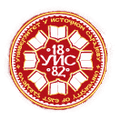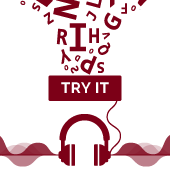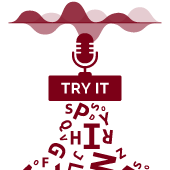- Details
Computer Telephony Integration (CTI) is one of the greatest technological achievements of the end of the last century, leading to significant changes in almost all areas of business and everyday life. Computer telephony connects computers and telephone resources combining the advantages of both of these systems, thus being a logical step forward in the inevitable trend of development of communication systems. The basic functionality of a CTI system is to allow the computer user to control the telephony system and the incoming and outgoing communication.
CTI first appeared in commercial use in the mid 1980s. In the beginning, its application was mostly limited to several narrow market segments, particularly call centres where the total volume of calls justified the costs, but the advancements in computer technology significantly increased the capacities of computer-telephony systems, which led to an increased interest in CTI applications in a wide range of users. The manufacturers of hardware and software solutions offer their products on the market and public telephone networks represent the infrastructure that enables the implementation of CTI applications for both large and small users.
These applications can be divided into three main groups:
- Applications for the administration of private telephone networks via an external computer
- Unified messaging applications and customer relationship management (CRM)
- Applications allowing the use of computer networks for voice and fax communication. A private branch exchange (PBX) can be replaced or used alongside the communication server - VoIP communication.
Administration of a telephone system using CTI
Computer telephony provides a simple graphical alternative to the standard capabilities of the telephone exchange. Using a graphical user interface (GUI) rather than a system driven by alphanumeric codes or LCD menu boards, routine functions such as transfer of extensions or adding new ones can be performed by the administrator in the company itself.
What are “unified communications”?
In addition to the integration of voice-driven telephony and computer systems, by using CTI it is possible to interconnect other communication channels used in businesses, such as fax, e-mail and voice mail, and manage them simultaneously. Unified communications can be used for setting up an electronic messaging system at the company, creating a single interface with a single directory and a single place for storing all kinds of messages.

What is “customer relation management”?
Since the telephony system is integrated with the computer system, it enables the functioning of an application which focuses on the interaction between customers and sales personnel in a company. Customer relation management (CRM) is achieved by using technologies for organisation and automation of business processes, especially sales activities, but also marketing activities, customer services and technical support. The ultimate goal is to find and attract new customers, to build better relationships with existing customers, to reclaim the old and the lost ones, and to reduce the overall cost of marketing and sales support.
CTI applications allow:
- Caller authentication. Using one of the several standard methods, caller ID can be displayed on the screen and compared with the one retrieved from the database.
- Voice recognition, for authentication or forwarding of messages.
- To determine how to process a call by stating a request or by keying in the appropriate option (e.g. whether to forward the call to a particular person or department).
- The functioning of Interactive Voice Response (IVR).
- To look up the caller ID in the database and present all relevant information related to that caller on the screen.
- Management of voice or video conferences
- Collecting and displaying messages left by callers
- Receiving fax messages and routing to appropriate fax machines
- Conducting outbound campaigns (telemarketing)
- Activating CRM applications through phone calls.
- Details

Text-to-speech (TTS) synthesis is the oldest speech technology, originating from as early as the 18th century, when first "speaking machines" appeared. Meanwhile, this area has developed tremendously, mostly due to advances in computer technology during the last decades. Development of this technology is a multidisciplinary problem whose solution requires knowledge from a range of fields such as acoustics, phonetics and linguistics, as well as mathematics, telecommunications and signal processing.
This is the speech technology with language dependency at its highest, and solutions developed for one language cannot be used for others. An adaptation is possible (but still painstaking) only in case of extremely similar languages.
The aim of speech synthesis is to generate intelligible speech based on textual input. The intelligibility implies a certain level of naturalness, achieved by manipulating lexical and sentence intonation as well as phonetic content, in much the same way the humans do it. Naturalness of synthesized speech is not only a matter of aesthetics; it is an important element that makes synthesized speech easier to understand, helping the listener to separate it into words.
Applications of speech synthesisers are numerous. In computer telephony such systems are an indispensable tool for providing information to a large number of callers, especially when it comes to large quantities of information that changes frequently (e.g. newly received e-mails), making it impractical or impossible to engage a voice talent to read it.
Speech synthesisers are extremely helpful to the disabled. This particularly applies to the speech impaired, who can use them to engage in conversations – even by telephone, as well as the visually impaired, who are given the ability to independently use PCs and thus engage in everyday life more easily.
Read more about the AlfaNum software component for speech synthesis.
- Details

Automatic speech recognition (ASR) is one of the greatest technical challenges of modern times. It remains the focus of interest of many researchers all around the world for more than half a century.
Like all speech technologies, ASR represents a multidisciplinary problem whose solution requires extensive knowledge in many areas of science and engineering such as acoustics, phonetics and linguistics, mathematics, communications, signal processing and programming. Another difficulty is the fact that the problem in question is extremely language-dependent.
The aim of automatic speech recognition is to analyse recorded speech and to convert utterances (words or sentences) into appropriate text. In this way the system "recognizes" what a speaker has said.
ASR systems can be divided into those that recognize only isolated words and those that are capable of recognizing connected words as well. They can also be classified based on the size of the vocabulary (number of words that can be recognized at a time), based on their capability to recognize only a fixed set of words defined during training or any set of words defined at runtime (phoneme based recognition), or based on their dependency on a particular speaker.
Applications of ASR systems are numerous and they depend on their properties. The most popular ASR systems are those independent of the speaker. Such systems are used within interactive voice response systems intended to provide various services to callers (information access, initiation and control over transactions etc.), with all the flexibility offered by speech recognition. Namely, the caller does not have to navigate through a complex menu structure using phone keyboard, but can say what he or she wants at once, thus reducing call duration. In this way system efficiency (number of users serviced) can be increased significantly.
Find out more on the AlfaNum software for speech recognition.
- Details
Audiomemo recording system is a multi-channel device for recording telephone conversations (locally or on a public network), radio and ambient sounds. In addition to recording, Audiomemo enables archiving and search through audio recordings obtained in this way.
Audiomemo recording system is practical for use in both small companies and large call centres. Its software components include a module for recording conversations, application for search and playback and application for management, monitoring and statistics.It is characterized by a high degree of robustness and reliability, as well as high adaptability to user requirements.
Features:
-
Recording SIP lines
-
Recording all incoming and outgoing calls
-
Recording from incoming lines and/or extensions
-
Audiomemo software is easy to use
-
One year warranty on all hardware
-
Free upgrade within a year
-
Optional remote installation and maintenance

SIP recorder
SIP (Session Initiation Protocol) recorder is used to record SIP traffic. In SIP, audio-packets are exchanged via a local computer network or over the Internet.
SIP recording takes place differently from digital ISDN recorder or digital PBX Recorder. Audiomemo binds to a mirrored port switch. In this way, Audiomemo detects and records compatible SIP packets.
This type of recorder is fully software and can also be realized on a virtual machine.
- Details





























